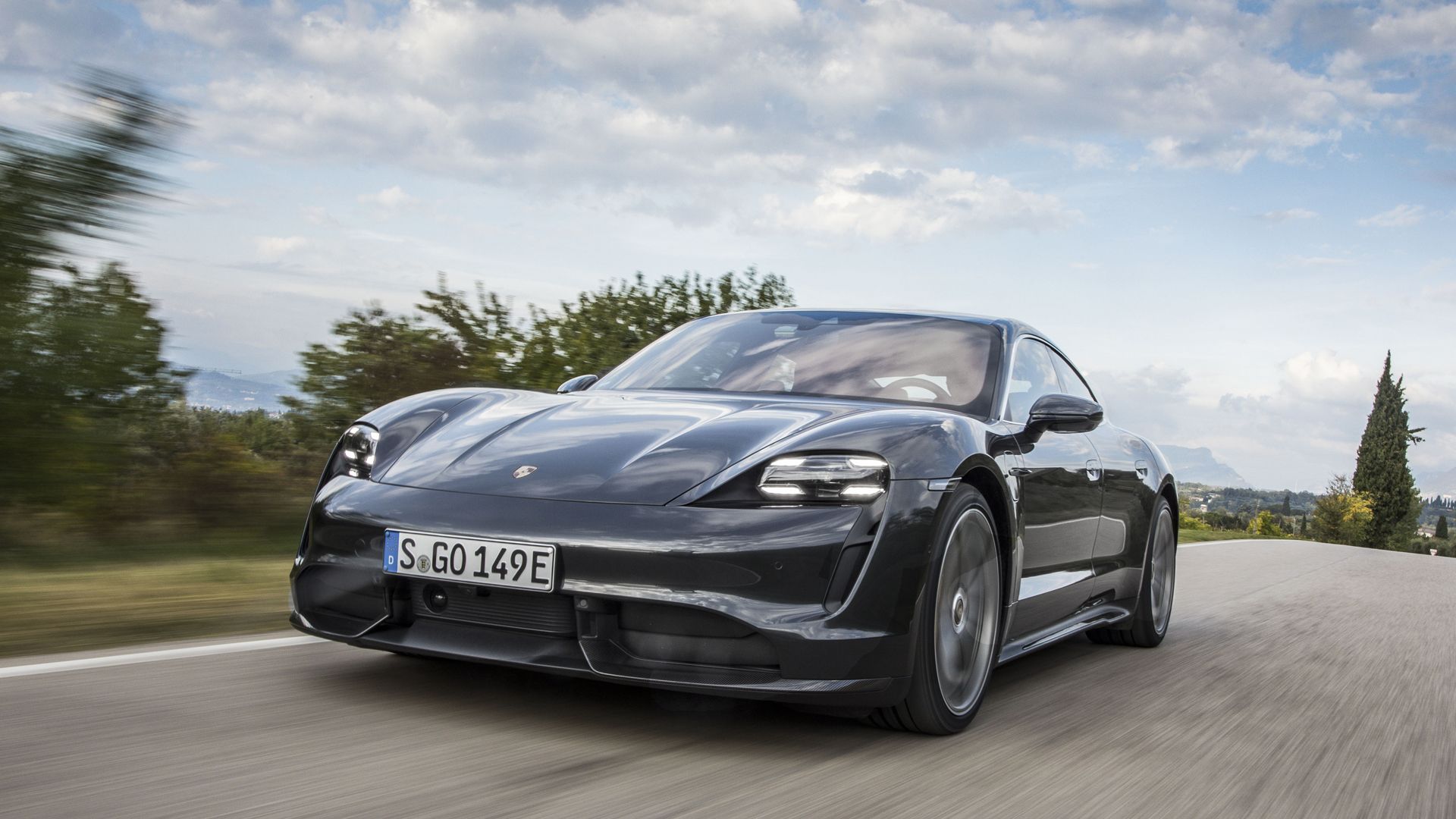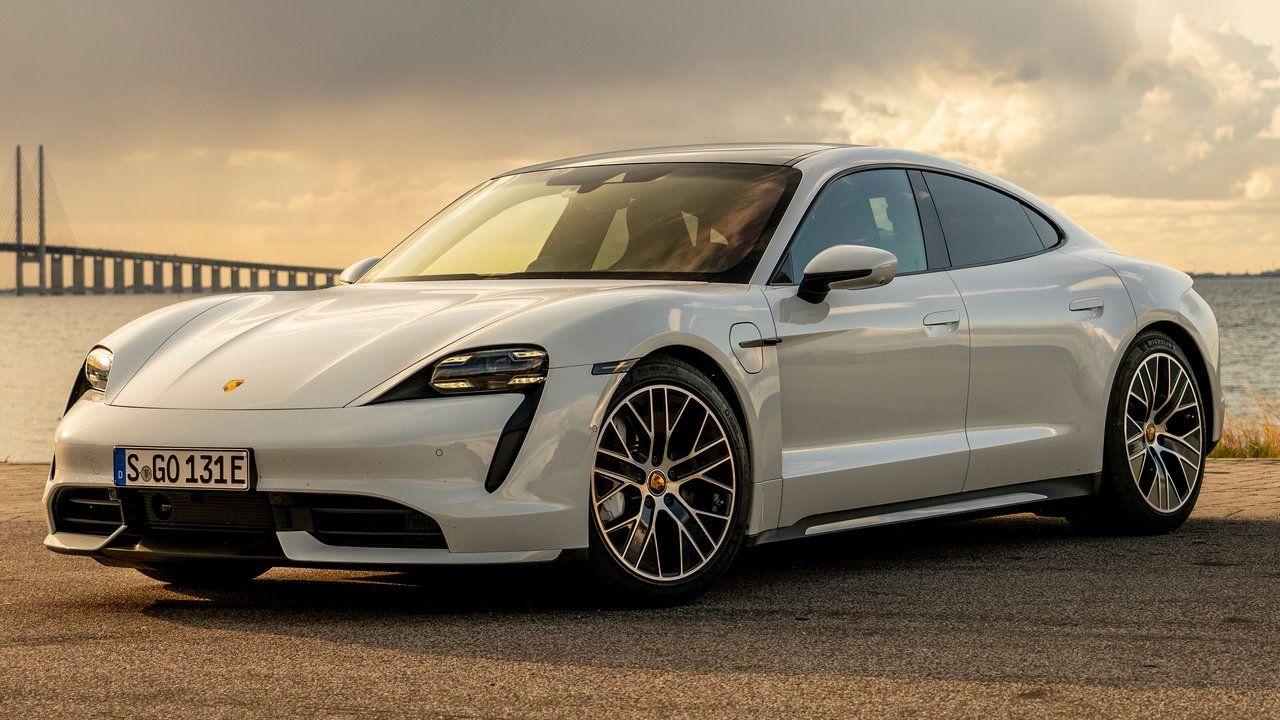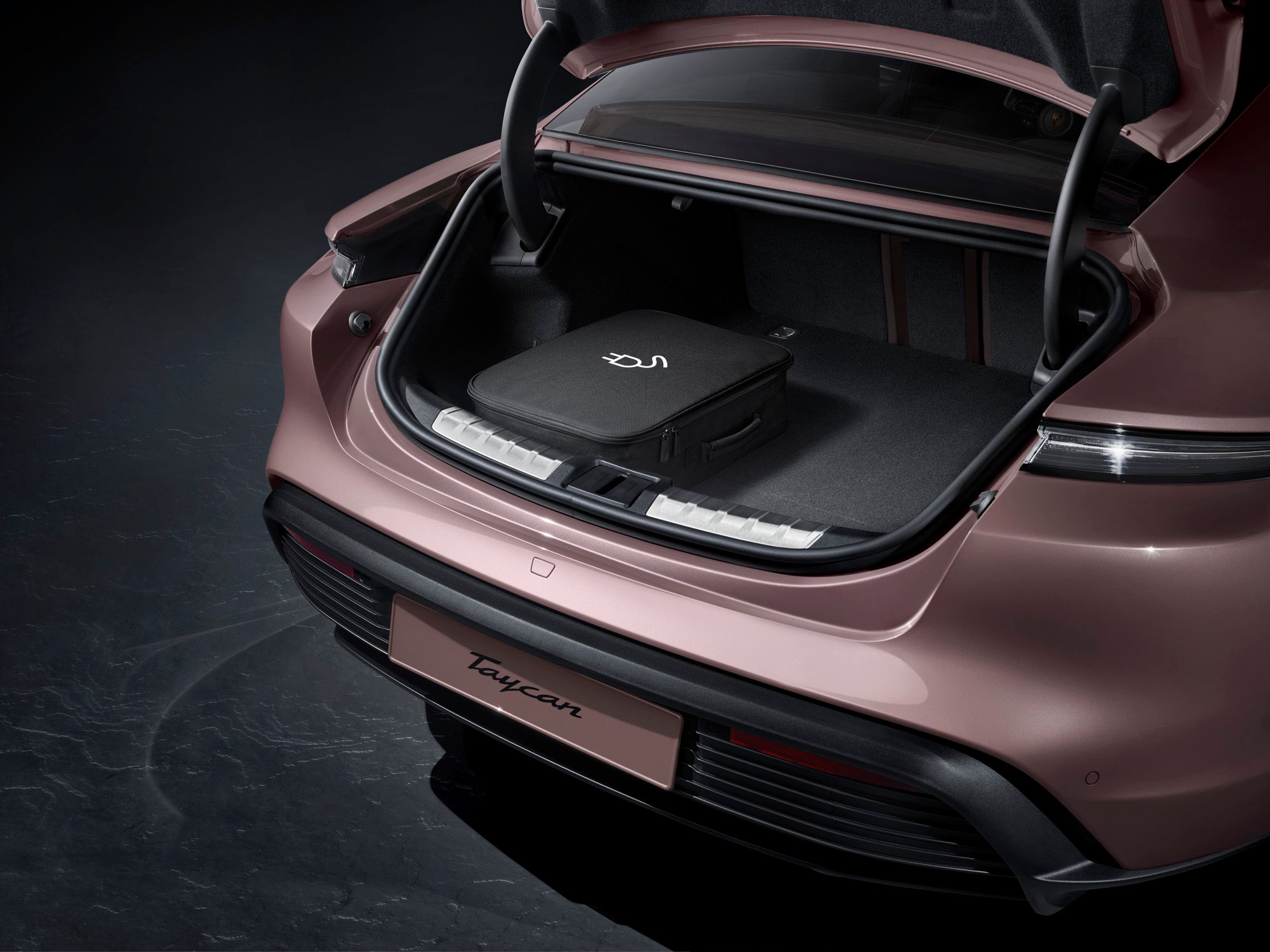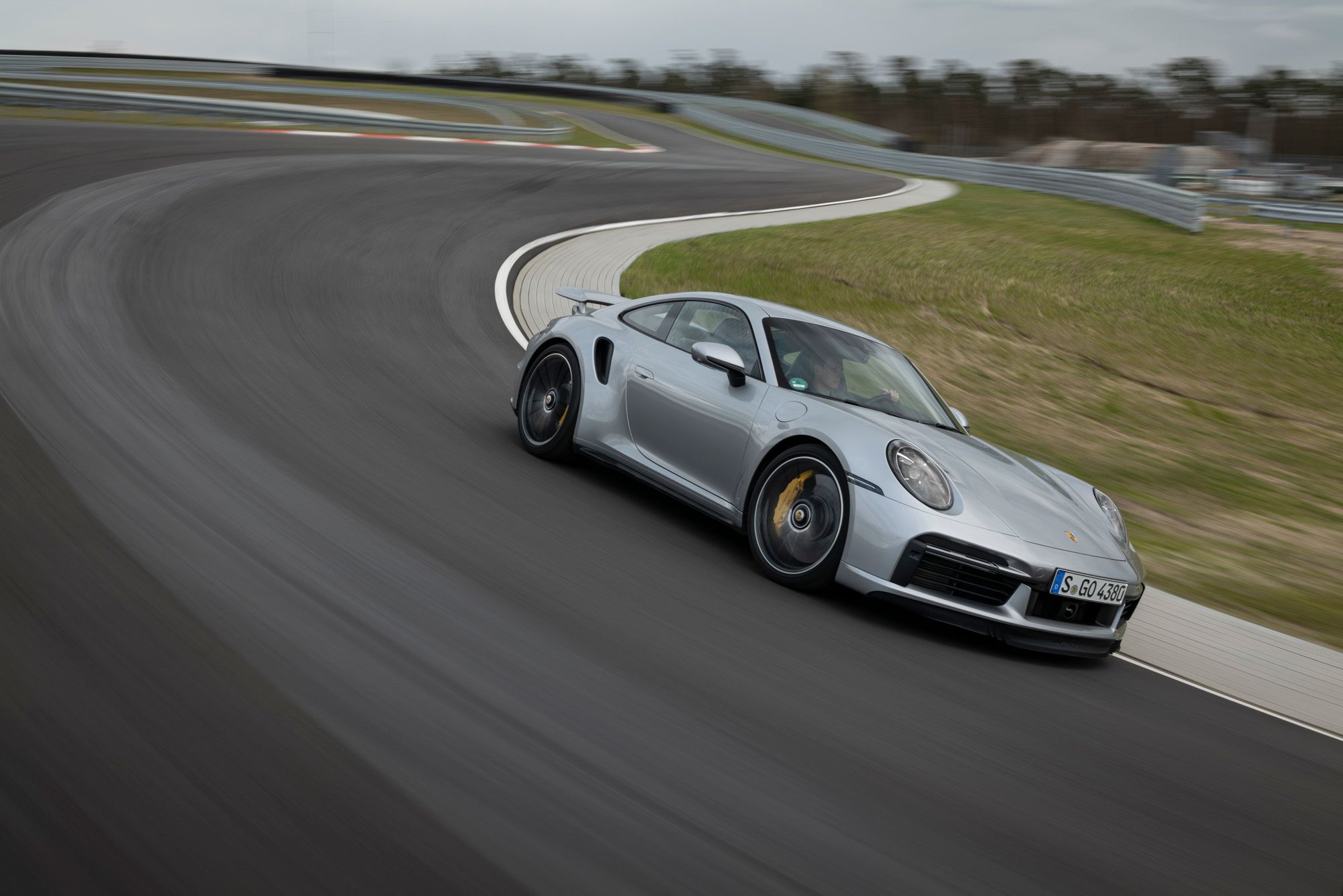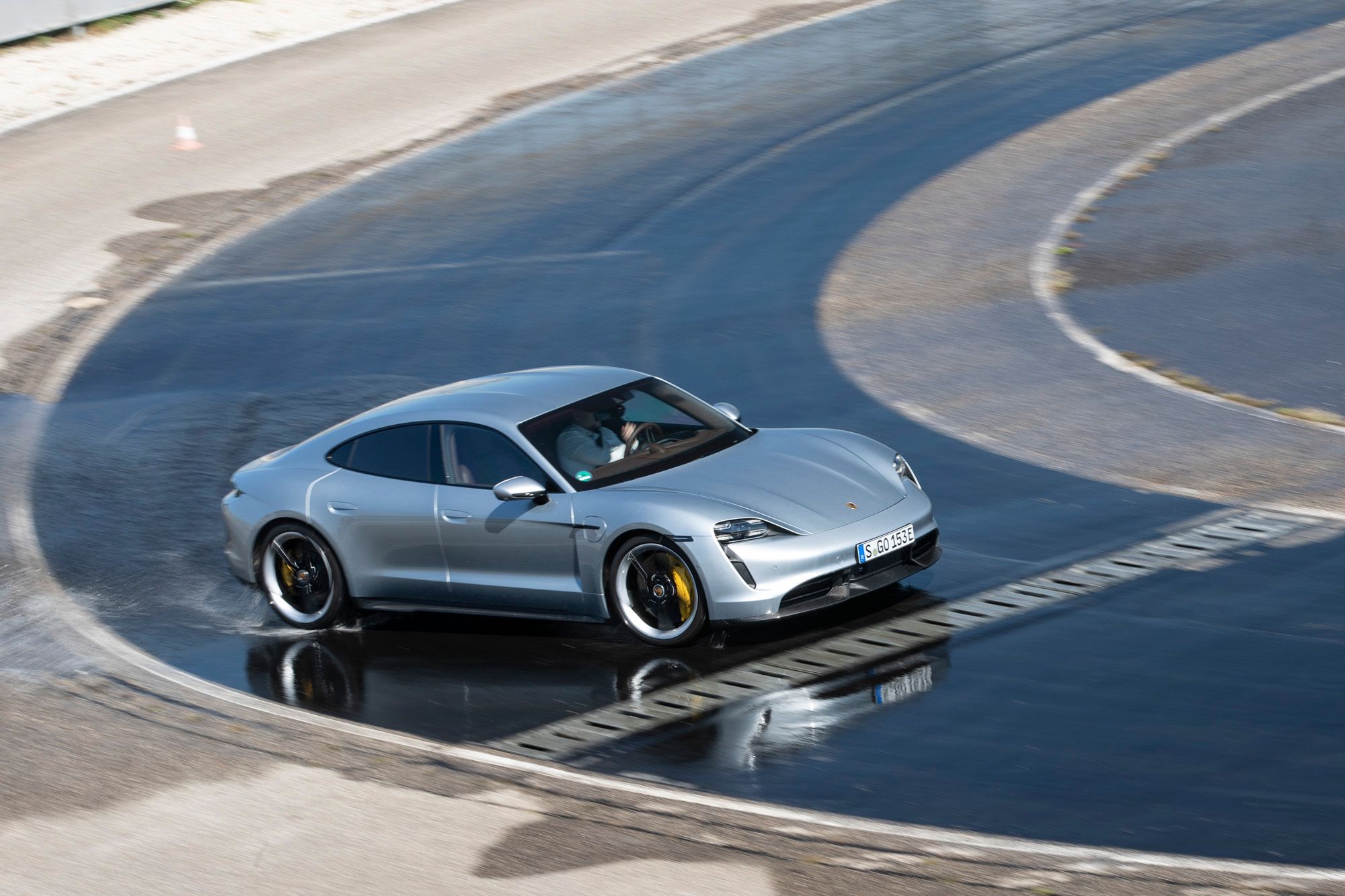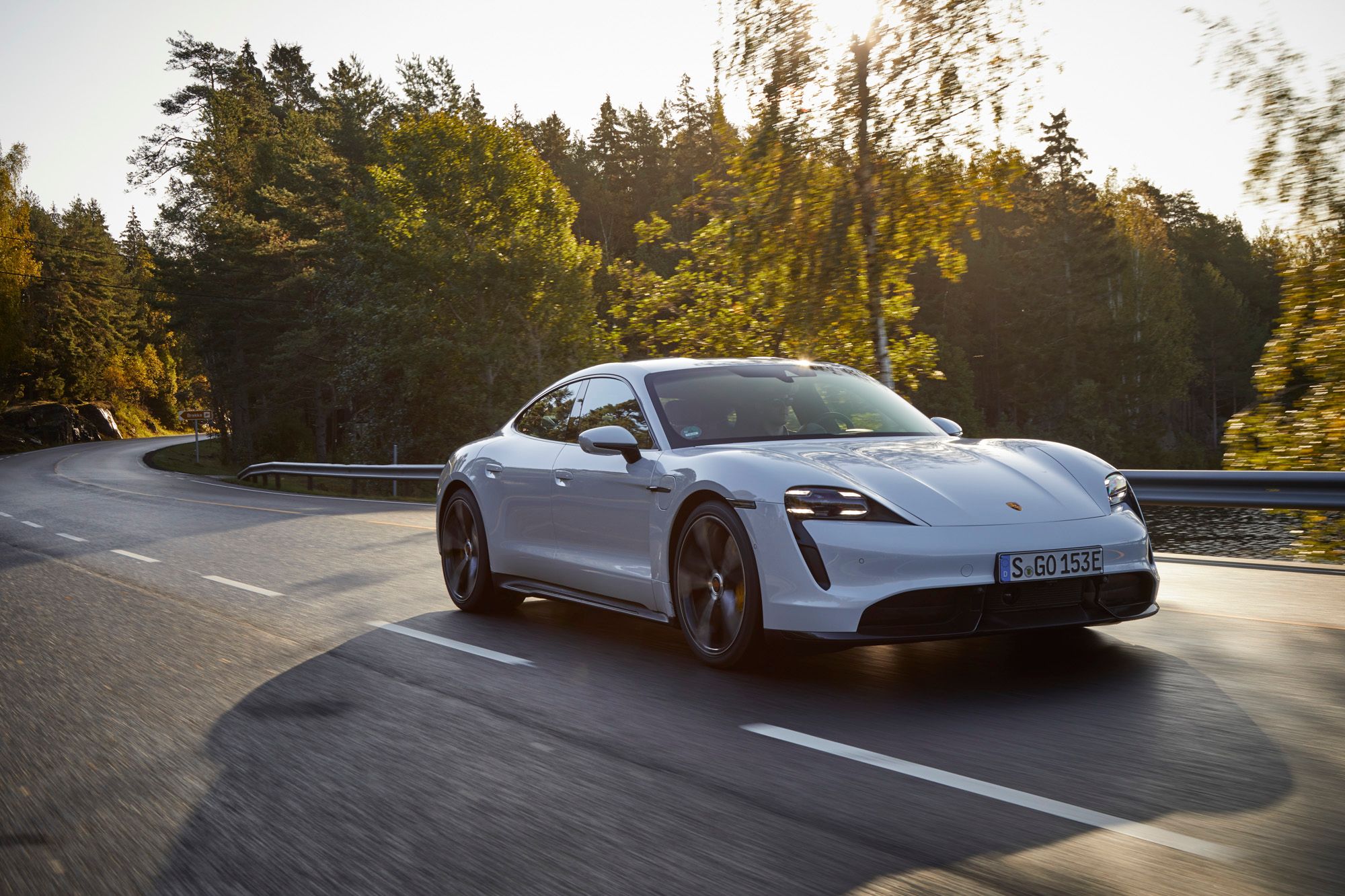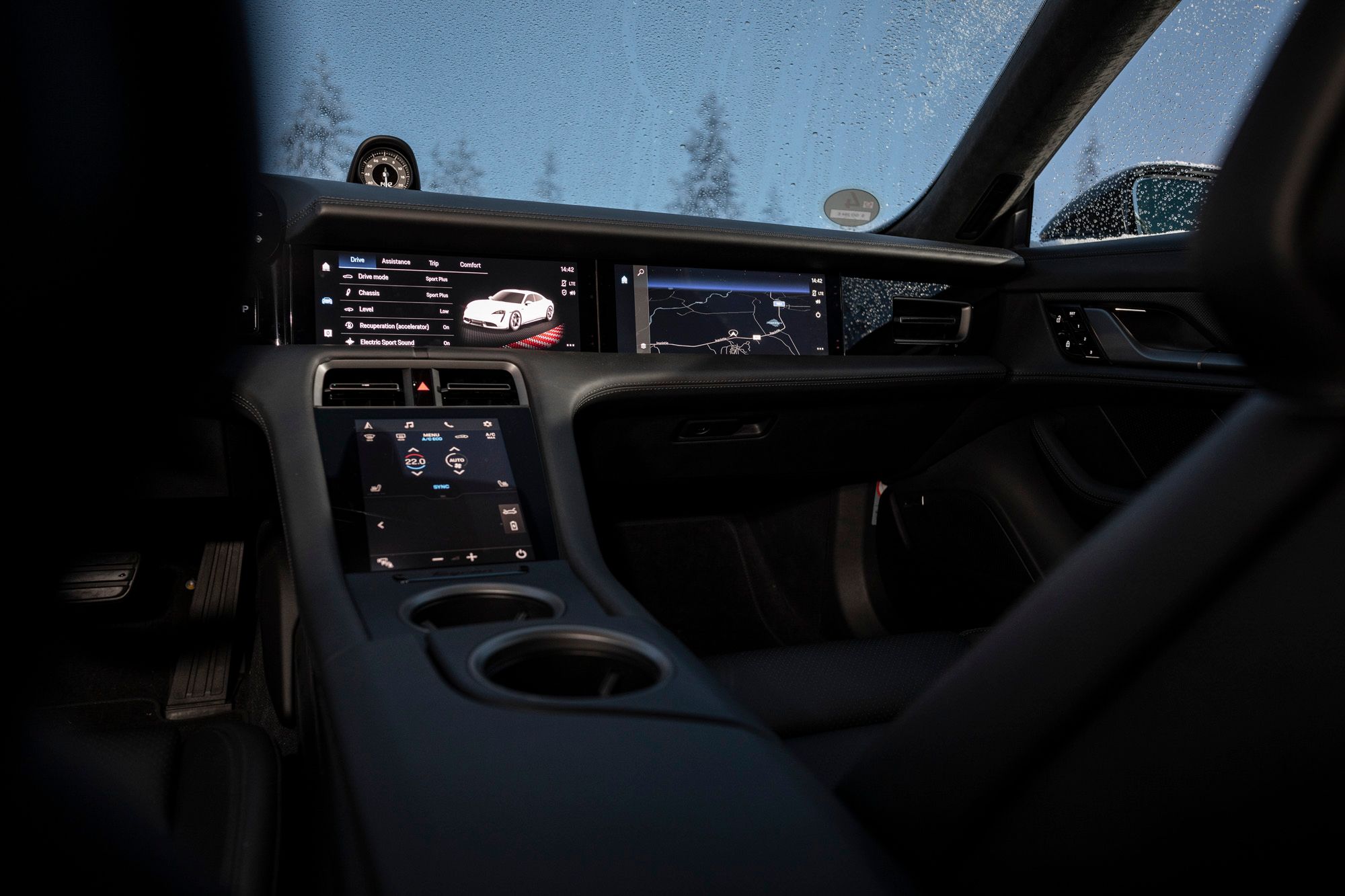Both the 911 and the Taycan are icons for Porsche: one has been around since the 1960s, and over the years it has become one of the most beloved and easily recognized sports cars on the market, while the other one, although new, represents the company's first steps into the all-electric era. While both have different souls, they are currently two of the most impressive cars you can find on the market.
These two cars appeal to different types of drivers, and each of them has unique features and advantages. One is a classic sports car, with a timeless design, superior handling, and amazing speeds, while the other one combines cutting-edge technologies, with impressive luxury features, a decent range, and great performance figures. In the end, it all comes down to what you expect from a car: do you want a car you can control and enjoy driving, pushing its limits, and enjoying the roar of the engine or do you want a safe car, that will do most of the work, provide all the luxury in the world, and make you look good in the eyes of the environmentalists? This is what separates the 911 from the Taycan.
Taycan: More Powerful
The Porsche 911 lineup includes models from the entry-level Carrera to the Targa, Turbo, and GT3. Power output ranges from 379 horsepower and 331 pound-feet of torque in the Carrera to as much as 640 horsepower and 590 pound-feet of torque from the larger 3.7-liter boxer engine in the 911 Turbo S. As good as this might sound for a smaller sports car, the Taycan better. In the base configuration, its electric powertrain delivers a total of 402 horsepower - up 23 horsepower when compared to the 911 Carrera – while the range-topping Taycan Turbo S delivers up to 750 horsepower - up 110 horsepower when compared to 911 Turbo S.
911: Lighter And More Agile
The Porsche 911 is meant to be driven, so you shouldn’t really care about its practicality or its fuel efficiency. Agility, on the other hand, is quite important, and weight is one of the factors that determine how agile a sports car is. For the Porsche 911, the curb weight ranges from 3,519 to 3,821 pounds, while the Taycan ranges from 4,771 to 5,060 pounds. The latest generation 911 is built on the MMB architecture and features a new rear-wheel steering system that makes it even more agile and more stable during cornering. The new rear-axle steering shortens the wheelbase and allows the 911 to be driven effortlessly around the bend with smaller steering movements. The turning circle is also reduced by 19.68 inches to 35.1 feet.
Taycan: More Practical
The Porsche Taycan is unique in that you can have the performance figures of a sports car and the practicality of a sedan. The Porsche 911 has a 2+2 configuration, but the rear seats aren’t the easiest to access. With the Taycan, thanks to its rear doors, things are a lot easier. And, the rear seats in the Taycan can easily accommodate adult passengers, while in the 911 there is barely room for kids. Add in the fact that the Porsche 911 only offers 4.6 cubic feet of cargo space - a far cry from the Taycan’s 14.3 cubic feet of trunk space and an additional 2.9 cubic feet of space in the frunk.
911: Loves High Speeds
The Taycan is one of the fastest electric sedans out there, with the Turbo S needing just 2.7 seconds to sprint from 0 to 60 mph. This is no doubt impressive, but when put next to the 911 things fade a little: the 911 Turbo S does the same 0 to 60 mph sprint in just 2.1 seconds. The Taycan Turbo S can hit a top speed of only 162 mph, while the 911 Turbo S goes up to 205 mph - performance figures identical to some of the fastest supercars out there. When it comes to the quarter mile, the 911 Turbo S is also significantly faster: it runs it in just 9.9 seconds at 138 mph, while the Taycan Turbo S needs 10.5 seconds at 130 mph. On the Nürburgring: the Taycan Turbo S needed seven minutes and 33 seconds, while the 911 Turbo S did the same lap in seven minutes and 17.3 seconds.
Taycan: King Of Efficiency
The 911 Carrera has a fuel economy of 18 mpg during city driving, 24 mpg on the highway, and 20 mpg combined. When driven with restraint, the Porsche 911 has a range of approximately 400 miles on a single tank of gas, though in reality, its range is about 330 miles – according to the U.S. Department of energy. When put next to the Taycan, which promises a range of up to 242 miles, you would think the 911 is a lot more efficient, but that’s not the case. It costs you about $5.50 to add an extra 100 miles to the Taycan, while filling up the tank in the 911 is about $70, which means you will have to pay a little over $10 to drive for the same 100 miles.
911: Has A Proper Engine Sound
Electric cars aren’t always quiet, but they also do not sound as aggressive as an ICE-powered sports car - at least not without fake sound synthesizers. They do, however, have the specific sound of the tires of the road, and the humming of the transmission and motors. For the Taycan, engineers had to "develop" a specific voice. And, while Porsche says it is not artificial, it is also not generated by the motor, but by specially incorporated components. On the other hand, the flat six's redline in the 911 Turbo S gives it a roar that no other "incorporated components" can replicate.
Taycan: A Lot Cheaper
The Porsche Taycan is not only more powerful and more practical than the 911, but also a lot cheaper. You can choose between base Taycan, Taycan 4S, Taycan GTS, Taycan Turbo and Taycan Turbo S. Prices range from $86,700 for the base model to $187,400 for the Taycan Turbo S. This might sound like a lot, but the 911 is a lot more expensive. With 22 different models to choose from, there is no doubt that every customer can find the sports car of their liking. But, prices for the 911 start from $106,100 for the base Carrera and climb very fast to $216,100 for the Turbo S.
911: Timeless, Iconic Design
When put side by side, it is very easy to recognize both the 911 and the Taycan as Porsche models. But no one can argue that the 911 is the better-looking car. The sports car started its journey back in 1963, and since then, its design has constantly evolved, though never so much that you can’t recognize it as a 911. Its silhouette has always stayed the same. It grew both in length and width, yet it always stayed simple and elegant. The latest generation 911 is the largest and the widest yet, and it also offers the most luxury and performance. The Taycan, on the other hand, just benefits from years and years of the design exercise, and it looks almost identical to the Panamera.
Taycan: More Advanced Technology
Despite the huge difference in price, the Taycan features a better-equipped interior. As of the beginning of 2022, both the 911 and the Taycan feature a 10.9-inch touchscreen equipped with the latest, sixth generation of Porsche Communication Management (PCM). That’s where the similarities end. The 911 is just now taking its first steps into getting a fully digital instrument cluster, while the Taycan already features an innovative instrument cluster consisting of a 16.8-inch curved display. It has four display modes: Power Meter, Map, Extended Map, and Reduced that are offered as standard, plus an optional Night View mode. Next to the instrument cluster and the infotainment screen, the Taycan has a smaller touch screen placed in a vertical position in the center console used to control the climate, plus an optional one on the passenger side.
911: Better Aerodynamics
Ever since the 911 nomenclature was used for the first time back in 1964, Porsche has constantly worked on improving its aerodynamics. The Taycan is no doubt one of the EVs with the best aerodynamics in the world, but the 911 is a little bit better. The 911 has more aggressive active aerodynamics, with a front lip spoiler that gets closer to the ground. The 911 Turbo also has an active front spoiler and rear wing, plus a special Wet mode, and an air brake. When the driver activates it, the aerodynamic control systems adapt the balance in favor of greater downforce on the rear axle and improve contact between the tires and the road. All the tests done revealed that the 911 consistently managed higher G forces in the corners and handles the faster corners a lot better.

